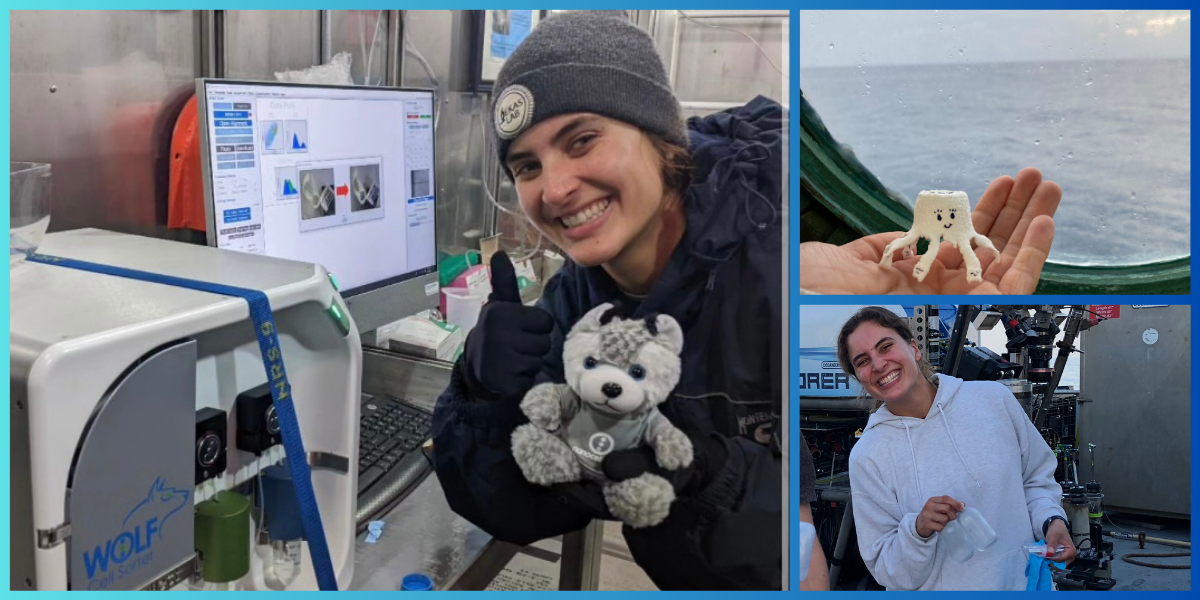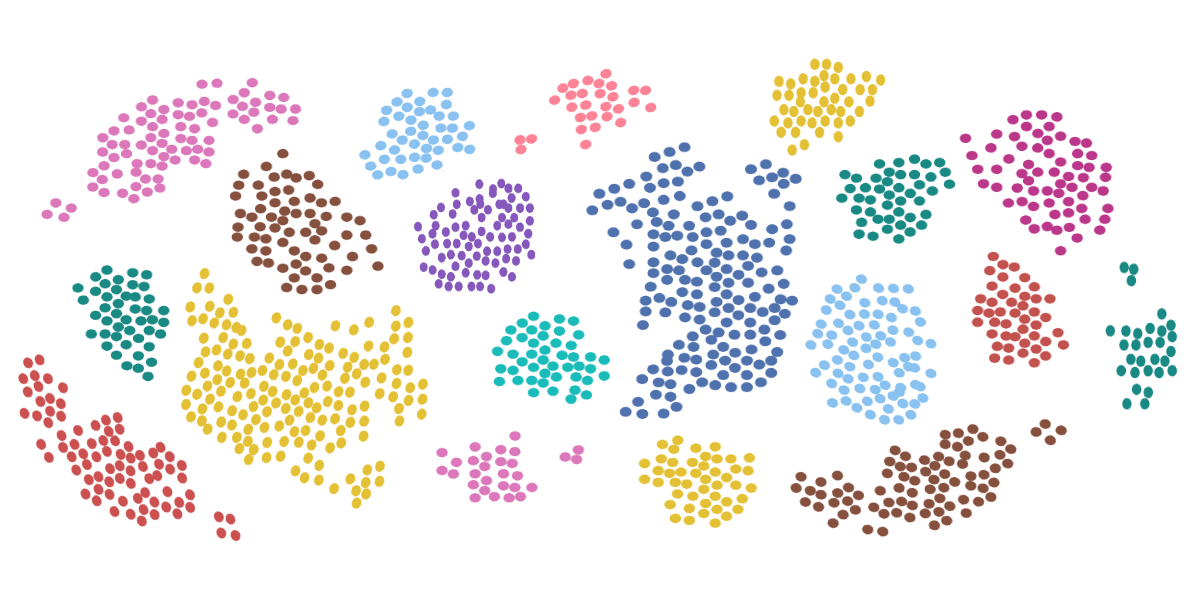The Importance of Sample Preparation Before Single Cell Genomics

Did your parents constantly warn you about the 5 P’s growing up? “Proper preparation prevents poor performance.”
It turns out that they couldn’t have been more right when it comes to microbiology.
Single cell genomics requires a highly specific sample to work with. In most cases, you begin with a heterogeneous sample, full of unknown cell populations, and it’s your job to sort, isolate, sequence, and then study—usually in that order. Where does prepping the sample come in? And what are some technologies used to help this critical step in the process?
Let’s find out.
What is the Goal of Sample Preparations?
Regardless of whether you’re single cell sequencing mRNA from cells, prepping a bacteria population for antibacterial testing, or developing medicines, there are a few characteristics you’re aiming for with sample cell preparation.
- You want healthy, viable cells. This is first and foremost—if your techniques cause excessive damage to your cell walls, they could further undergo lysis and ruin your sample. Similarly, if any of the machines you’re using has high internal pressures, apoptosis can occur, leaving you with a sample of cells that:
-
- Are less likely to be functional due to excessive damage
- Will provide false and inaccurate sequencing data
- Individual cells. What is single cell genomics if not only using one cell? This requires a single cell suspension free of clumps or sticky cells so that you can use other technologies to dispense or capture single cells. Studying the individual molecules within a single cell requires single cell multi-omics.
- You want a sample that is debris- and contaminant-free. When working in cell biology, you’re working between the micrometer and nanometer level (in the case of organelle, protein, and DNA and RNA . Thus, “debris” or “contaminants” can be like trying to clean out a sandbox when there’s a cruise ship anchor in it. Debris can cause clogged machines, false positives, and potentially waste weeks of waiting for clonal populations to expand. Clean samples only!
- For most research, you also need a high baseline population. One of the reasons cell lines were so revolutionary was that with the right medium and conditions, you could allow cells to repopulate indefinitely. Every CHO cell in every lab around the world comes from the same female hamster, for example. And for experiments in the lab, you need a high population to measure results, confirm accuracy, and in some cases, prove homogeneity and proper clonal expansion.
With your target directly in front of you, you can now aim appropriately. Let’s talk about the nitty gritty of preparing your sample.
Preparing Your Sample: Tips and Tricks
The single cell preparation tips and tricks could all sum to the same advice needed for souffle: treat with care. Otherwise it might explode or deflate the souffle.
While there are methods of removing the dead cells (more on that below), you don’t want to rely on “act first, remove later.” Because where there’s dead cells, there’s also soon-to-be-dead cells (lysis; apoptosis), unhealthy-not-repopulating cells, and all-around not viable cells. While it’s easy to differentiate between dead cells and happy, healthy cells. It becomes more difficult as you travel down the spectrum of death.
To avoid all spectrums of death, let’s instead keep the cells healthy and viable by practicing caution when:
- Washing a sample – Oftentimes you’ll be called to wash your cell sample with a phosphate-buffered saline solution (PBS). This requires a thorough (yet gentle) washing protocol of suspending cells and placing them in a centrifuge. This allows you to more easily pipette the PBS, leaving behind the cell pellet.
- Pipetting – Pipetting is one of those techniques that, with plenty of practice, you can get really proficient at. However, because you use this technique for everything under the fluorescent sun, it’s also easy to, with plenty of practice, get really lazy at. There are two fundamentals to pipetting in sample preparation that will be reiterated here (as your professor probably echoed this in your student days):
-
- Even with a wide-bore pipette, the force with which you pipette can damage cell viability and negatively impact sample quality. Always aim for gentle and consistent pressure.
-
- Because cell solutions can settle quickly (at the top or bottom), it’s important to pipette immediately, and to do so from the middle of the well each time. This will prevent inconsistent samples.
- Cell sorting and post-sort analysis – It’s likely you’ll be using a machine such as a flow cytometer to sort cells but because of high sorting pressures, the cell sorting process, while necessary, can cause a large amount of cell death. For this reason, you’ll need to perform a post-sorting analysis to determine the viability of the sample after sorting.
Note: While traditional cell sorters cause high amounts of cell death (with internal pressures exceeding 20 psi), there are new technologies that use less than 2 psi internal pressure to significantly improve this step of the process. See next section: Technologies That Help Prepare Samples .
- Removing any dead or unviable cells – Because dead, unviable cells will more easily lyse and cause clumps in your sample, it is critical to remove them so that they don’t affect the other healthy cells in the population. Thus, by removing dead cells, you can better prepare your sample for downstream assays.
- Post sample preparation storage – When you’re done washing, straining, pipetting, and you have removed the dead cells to create your perfectly isolated sample, cell suspensions can be placed on ice for a short amount of time before running your assay. Though for exact temporary storage needs, be sure to identify the proper conditions for different cell types.
While these basic techniques are incredibly important to keep in mind, and can help improve your lab results in simple and meaningful ways, there are technologies that can assist in this process as well.
Technologies That Help Prepare Samples
From flow cytometers to single cell cloning, there are technologies being developed rapidly to help with single cell genomics. Some of the more popular ones include:
- Flow Cytometers-Fluorescent activated cell sorting (FACS) – This technology is commonly used in tandem with flow cytometers. For example, if you have a heterogeneous sample that needs to be sorted, you can use fluorescent antibodies to tag a targeted cell type and then those cells can be sorted out from a heterogeneous population. However this often causes shear stress on cells due to the high pressure and decompression shock.
That’s where NanoCellect’s WOLF G2 Cell Sorter comes in. Knowing this pain point for researchers, the Wolf Cell Sorter utilizes low internal pressures (below 2 psi) to create an efficient flow cytometer that doesn’t harm the viability of cells. In addition, it uses disposable cartridges to avoid cross contamination and intuitive software for beginners and experts alike.
What is Single Cell Genomics Without Sample Prep?
Single cell genomics without sample prep is like baseball without a diamond; a skyline apartment complex without an elevator; a charcuterie without cheese!
All of these, including single cell genomics, are technically possible without their partnering feature. Though there’s something to be said about ‘proper preparation’ and ‘preventing poor performance’ that your parents might object to with the apartment complex, charcuterie, baseball, and yes, even single cell genomics.
To make your parents happy, and the individual cells you work with, make sure you apply the 5 P’s to your cell sorting process.
At NanoCellect, we know happy cells.
Sources:
- Rogel Cancer Center. Sample Preparation. https://www.rogelcancercenter.org/single-cell-analysis-core/sample-preparation-and-costs
- BiteSizeBio. 17 Ways to Stop Pipetting Errors From Ruining Your Experiments. https://bitesizebio.com/344/17-ways-to-stop-pipetting-errors-ruining-your-experiments/
- NCBI. Purification of Specific Cell Population by Fluorescence Activated Cell Sorting (FACS). https://www.ncbi.nlm.nih.gov/pmc/articles/PMC3144656/
- NCBI. Hydrodynamic focusing – a versatile tool. https://www.ncbi.nlm.nih.gov/pmc/articles/PMC3251643/



